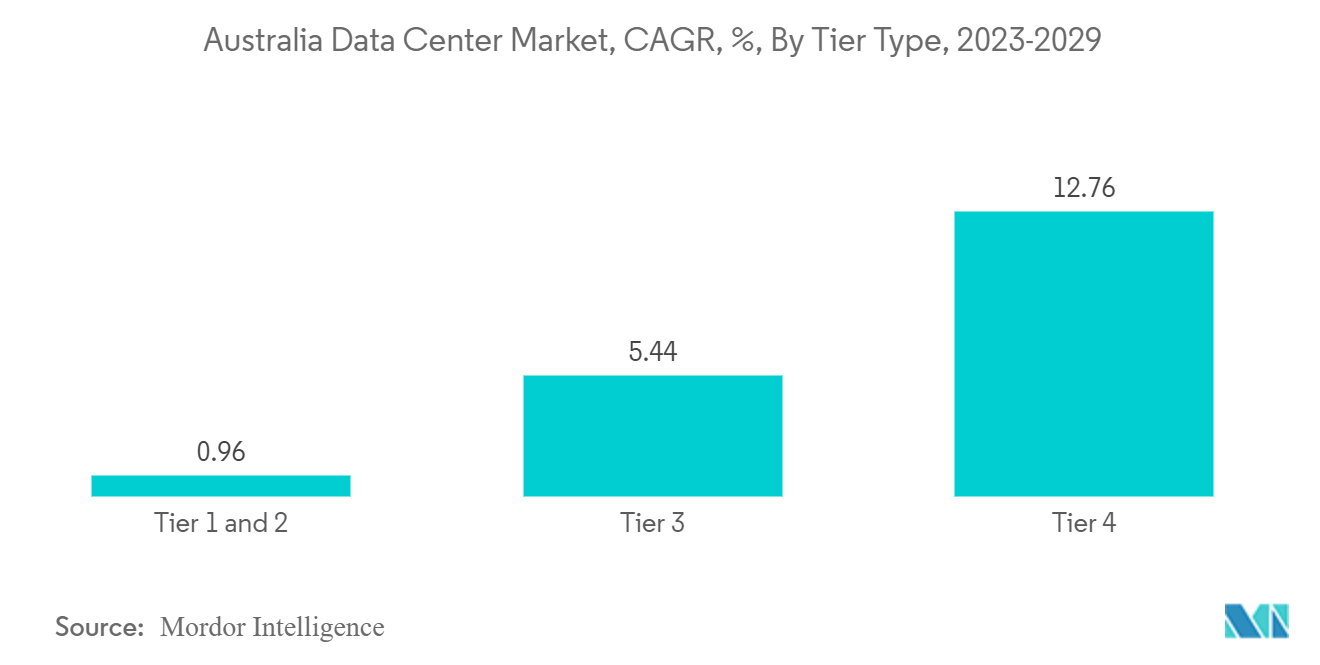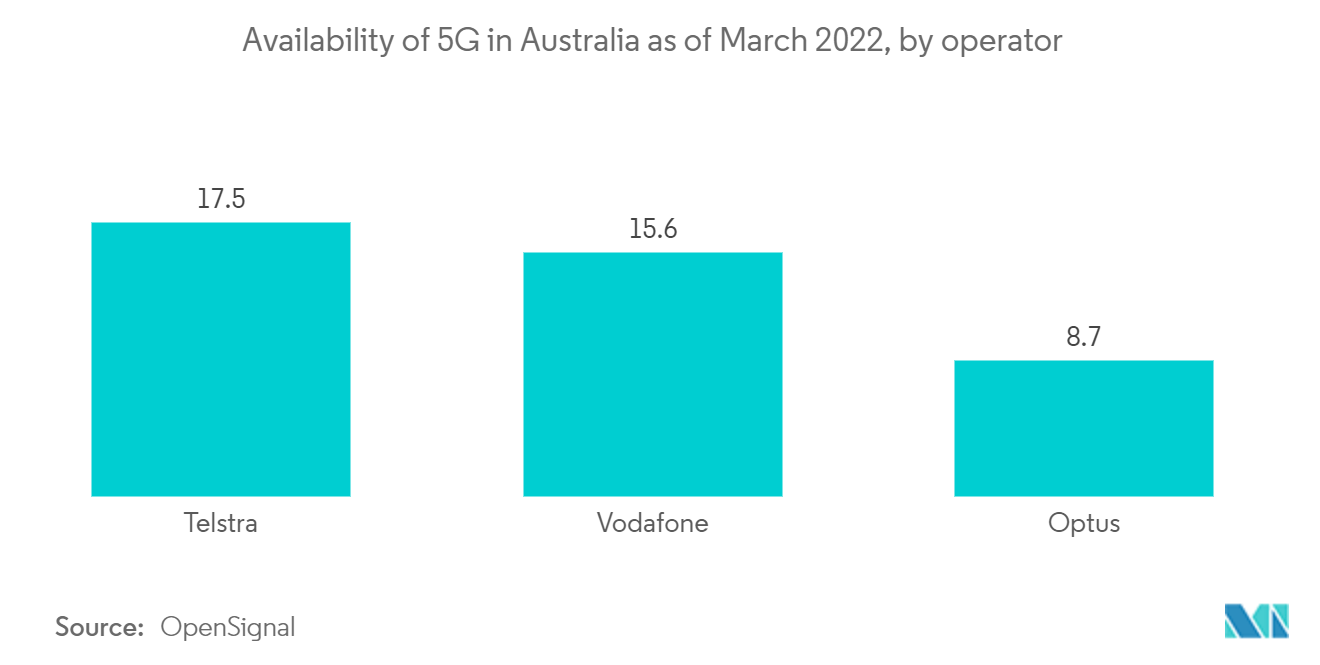Market Trends of Australia Data Center Construction Industry
Tier 3 is the Largest Tier Type
- Australia has no Tier 1 & 2 certified facilities. The Tier 3 segment of the Australian data center market reached an IT load capacity of 1,185.7 MW in 2021. It is anticipated to grow from 1,616.26 MW in 2022 to 2,615.6 MW by 2029 while recording a CAGR of 7.12%. The Tier IV data center segment reached an IT load capacity of 123 MW in 2021. The capacity is anticipated to grow from 185 MW in 2022 and reach 517 MW by 2029 while recording a CAGR of 15.81%.
- Tier 3 and 4 data centers are expected to showcase significant growth in the Australian data center market. Tier 3 data centers offer uptime of 99.98%, with N+1 redundancies, which makes them preferable for the highest number of businesses. However, providers are getting the Tier 4 certification for their new facilities. For instance, NextDC's data center in Brisbane has become the first in the country to receive a Tier 4 constructed facility certification from Uptime Institute.

Telecom is Anticipated to Hold the Highest Market Share
- The Australian telecommunications industry is witnessing significant change. The telecom industry in Australia consists of three major carriers and an infrastructure provider, National Broadband Network (NBN), which provides fiber and fixed-line networks. Vendors mounting their technology on the towers are Telstra, Optus, and TPG, formerly known as VHA, plus NBN.
- Currently, Australia has deployed 5G in major cities and is in the process of auctioning off the spectrum to provide more services. This will increase the need for towers. In April 2021, the government allocated a high band 5G spectrum (in the 26 GHz band), which will enable extremely fast, high-capacity services. In the second half of 2021, the government allocated a low band 5G spectrum (in the 850/900 MHz band), which will be crucial for ensuring broader geographic coverage of 5G services. This will enable new applications for 5G in the enterprise market that take advantage of 5G's unique properties like ultra-low latency, high capacity, and advanced functions like network slicing.
- In 2022, the availability of 5G in Australia increased through famous telecom players like Telstra, Vodafone, and Optus. According to OpenSignal, Telstra had the highest 5G availability of the operators. Telstra customers with a 5G enabled device could obtain a 5G connection 17.5 percent of the time, whereas Optus customers could only connect 8.7 percent of the time.
- In line with recent investments and acquisitions, the telecom segment of the Australian data center market is expected to grow. In June 2022, OMERS Infrastructure, which recently acquired the telecommunication tower assets of TPG Telecom, is making another tower investment in Australia. OMERS Infrastructure announced that it had agreed to buy Stilmark, a developer, owner, and operator of mobile tower assets. The consolidated towers business will also be part of OMERS Infrastructure's global portfolio of digital infrastructure assets. The telecom segment of the Australian data centers market is expected to grow significantly in order to meet the growing demand and increase dependency on data centers.

